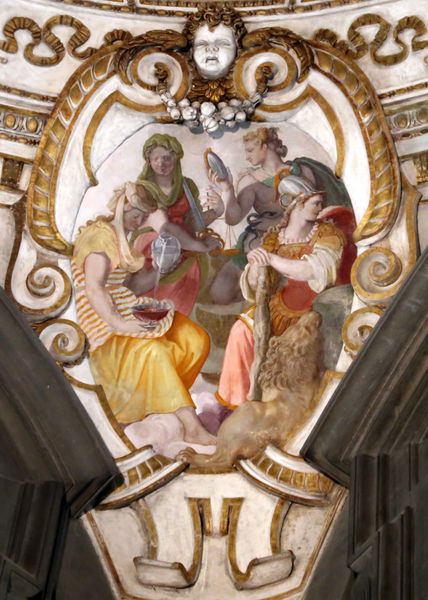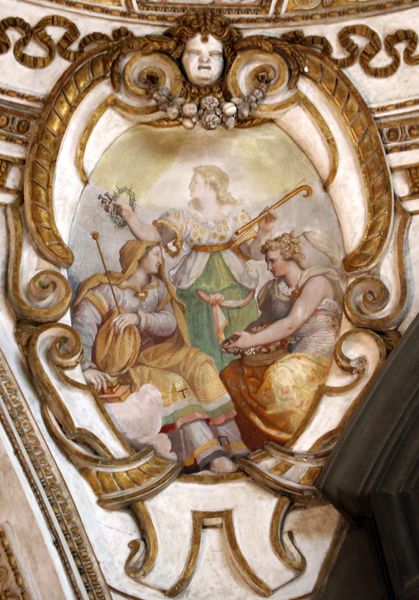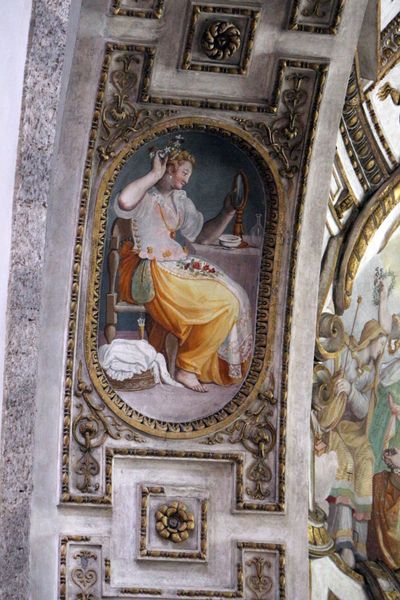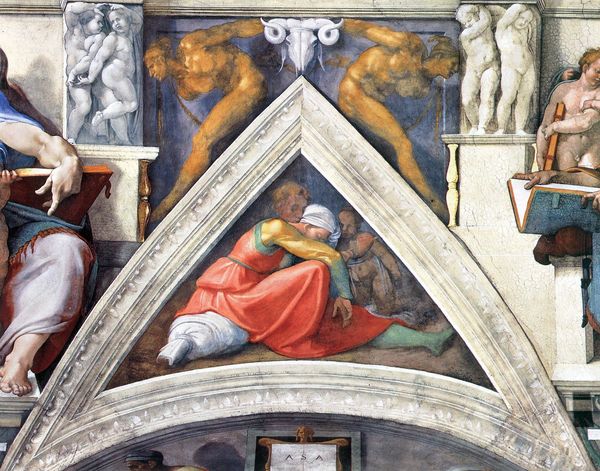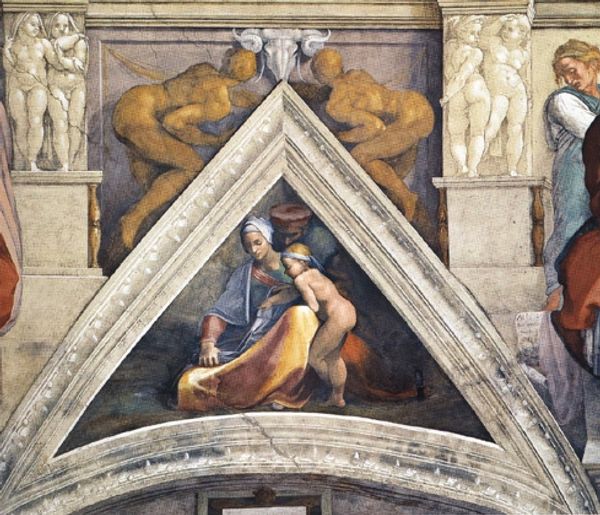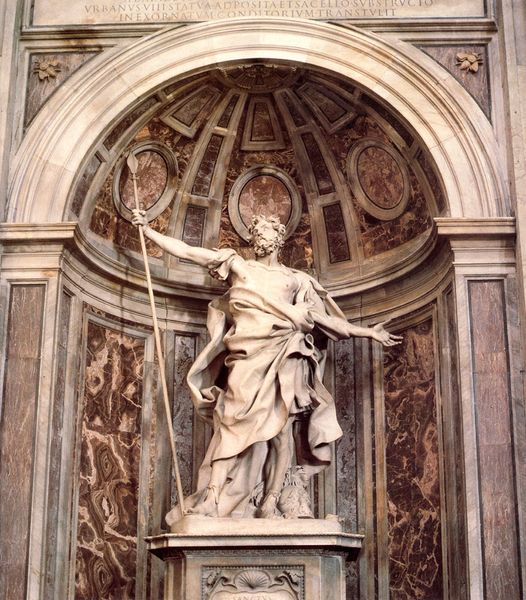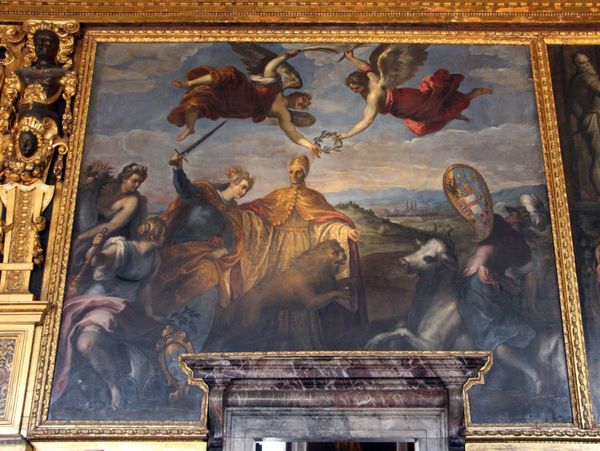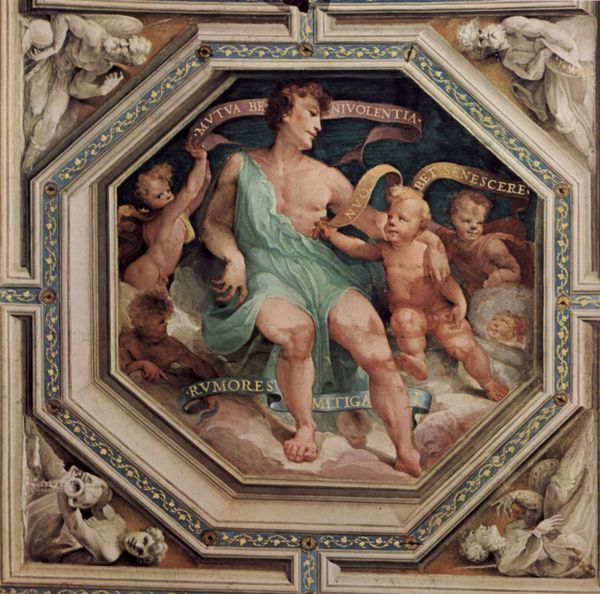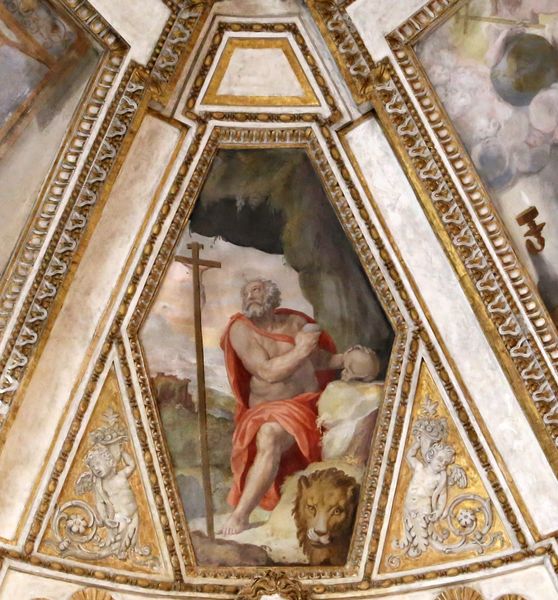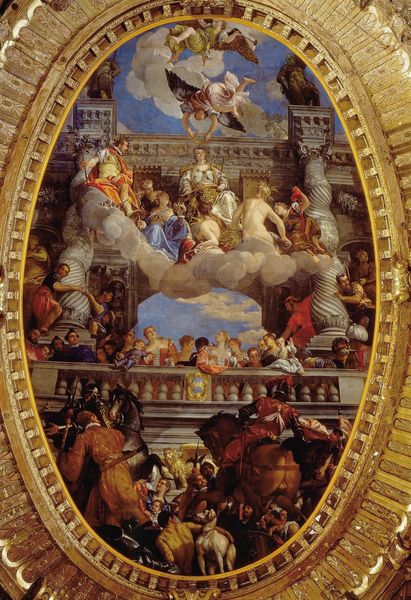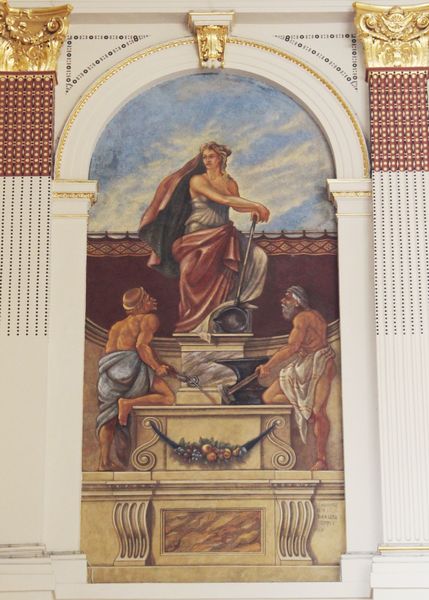
fresco
#
allegory
#
landscape
#
mannerism
#
figuration
#
form
#
fresco
#
underpainting
#
line
#
history-painting
#
academic-art
#
italian-renaissance
#
historical building
Copyright: Public domain
Editor: So this is Alessandro Allori's "Fame," a fresco from 1582. The way the central figure is brightly lit, with strong, active movement feels really assertive. What do you see in this piece, especially regarding its historical context? Curator: It’s easy to see “Fame” as a celebration of achievement, which aligns with Renaissance values. But I’d like us to think about the concept of fame itself, particularly during that period. Who gets to be famous, and why? Who is history kind to, and who does it erase? This isn't a neutral image. Allori and his patrons were working within a power structure, defining what "fame" even meant, shaping public memory for future generations. The composition— the way this figure literally towers above and almost tramples someone at the bottom— it all speaks volumes about power. Editor: That makes me reconsider the central figure’s assertiveness… Almost aggressive, you mean? Like fame is something *achieved* by stepping on others, not necessarily something deserved. Curator: Precisely. This era, rife with its own internal and external power struggles, political maneuvers, religious reformations and so forth, demanded loyalty. The Mannerist style itself –the elongation of figures, the almost artificial dynamism – adds another layer. It wasn't about simple, clear representation, it's a statement. It forces us to ask whose stories are being told and whose are being silenced in this pursuit of "Fame". Think of all the countless stories that went unrecorded, the perspectives that weren’t valued. Editor: That completely shifts my understanding. I initially saw a straightforward celebration, but now I see a complex, even troubling commentary on power and visibility. Thanks. Curator: Indeed, that's how the past speaks to the present, inviting constant reevaluation, revealing the inherent biases in even the most celebrated stories. Art like this forces us to wrestle with the ethics of representation.
Comments
No comments
Be the first to comment and join the conversation on the ultimate creative platform.

